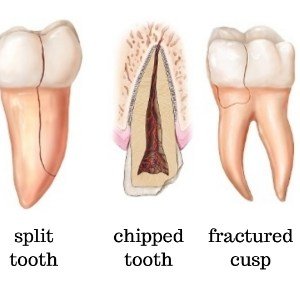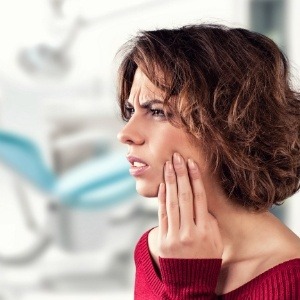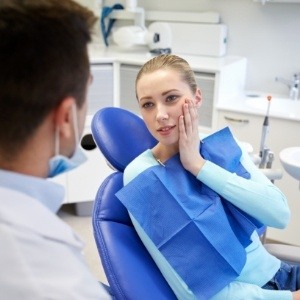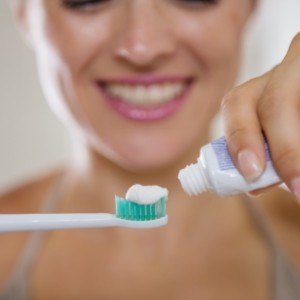Cracked Teeth Repair – Saratoga, CA
End Your Dental Pain

A tooth can become cracked for any number of reasons, from trauma to normal wear and tear. While some cracks are relatively harmless, others may indicate serious damage to a tooth and can cause a variety of symptoms. If you suspect that one of your teeth may be cracked, you should seek out an endodontist in Saratoga as soon as you can for treatment. In our practice, our team of dental specialists are experts when it comes to saving cracked teeth using a variety of advanced treatments. The sooner you receive care, the better the outcome will be, so be sure to contact us today.
Why Choose Endodontic Associates Saratoga for Cracked Teeth Repair?
- Highly Skilled Endodontists with Decades of Experience
- Kind Team Members That Treat You Like Family
- Advanced Technology In-House Makes Your Care Better
Symptoms of a Cracked Tooth

A cracked tooth can make its presence known via a variety of symptoms, including:
- Toothache
- Pain when chewing (especially when you release your bite)
- Increased sensitivity to hot and cold temperatures
- Swelling of the gums around a tooth
- Fever
Often, the pain caused by a cracked tooth is intermittent. Very rarely do patients experience ongoing, sustained pain. However, just because you are not in constant pain does not mean you should ignore signs of a problem. Allowing a cracked tooth to go untreated will only give the problem an opportunity to worsen. You might even end up needing emergency treatment.
Why Does a Cracked Tooth Hurt?

Your teeth are composed of three distinct layers:
- Enamel - This is the hard outer layer of the tooth (in fact, it is the hardest substance in the human body). It is designed to protect the layers beneath it.
- Dentin - This is the yellowish middle layer of a tooth. It contains tubules that connect to the nerve inside a tooth.
- Dental pulp - This is a soft substance that contains the tooth’s nerve and blood vessels.
When the outer layers of a tooth become cracked, chewing can cause them to move in such a way that irritates the sensitive pulp. After a while, the pulp can become so damaged that it isn’t able to recover. Left alone, the pulp can even develop an infection that can eventually spread to the gums and bone that support the tooth, leading to the need for an extraction.
How is a Cracked Tooth Treated?

There are many different ways a tooth can crack, so the kind of treatment a tooth needs will depend on the type, location, and extent of the damage. Some common types of cracks are:
- Craze lines: These cracks are small and usually cause no trouble for a tooth other than perhaps affecting its appearance. If severe enough, they can be addressed with cosmetic dentistry.
- Fractured cusp: A cusp is another name for the high point on a tooth’s chewing surface, and pieces of it often break off when a tooth has been treated with a filling. This very rarely damages the dental pulp and usually doesn’t cause much pain. Typically, a dentist can fix this by applying a new restoration.
- Cracked tooth: Technically, a cracked tooth in Saratoga means that a crack in the enamel extends from the chewing surface vertically toward the root. If the crack extends to the pulp, it can often be treated with root canal therapy. However, if the crack goes all the way past the gum line, it may no longer be treatable; an extraction may be necessary.
- Split tooth: A split tooth means that a crack has extended all the way through a tooth but has not progressed past the gum line yet. The entire tooth cannot be saved, but portions of it may be. In most cases, root canal therapy can be performed to save most of the tooth.
- Vertical root fracture: This is a crack that starts at the root and extends toward the chewing surface of a tooth. This type of problem often causes minimal symptoms, which can make it difficult to notice. It is often discovered when the surrounding bone and gum tissue have become infected. The tooth may need to be extracted, or endodontic surgery could be used to save most of the tooth by removing just the fractured portion.
Tips for Preventing Cracked Teeth

Our team is always ready to help you, but we would prefer that you never have to suffer from a fractured tooth in Saratoga. Here are a few tips that can decrease your risk of falling victim to this problem:
- Keep your teeth strong. Brushing twice a day with fluoride toothpaste can fortify your enamel. You should also eat a diet rich in tooth-friendly nutrients, such as calcium, vitamin D, and phosphorus.
- Avoid biting hard objects. You should never chomp down on ice, hard candies, or non-food items (such as fingernails or pen caps).
- Be aware of the signs of bruxism. Bruxism is habitual teeth grinding that often occurs at night. Wearing a nightguard can protect your top and bottom teeth from each other.
- Wear a mouthguard when you play sports. A custom mouthguard from a dentist can drastically reduce the risk of oral injury.





